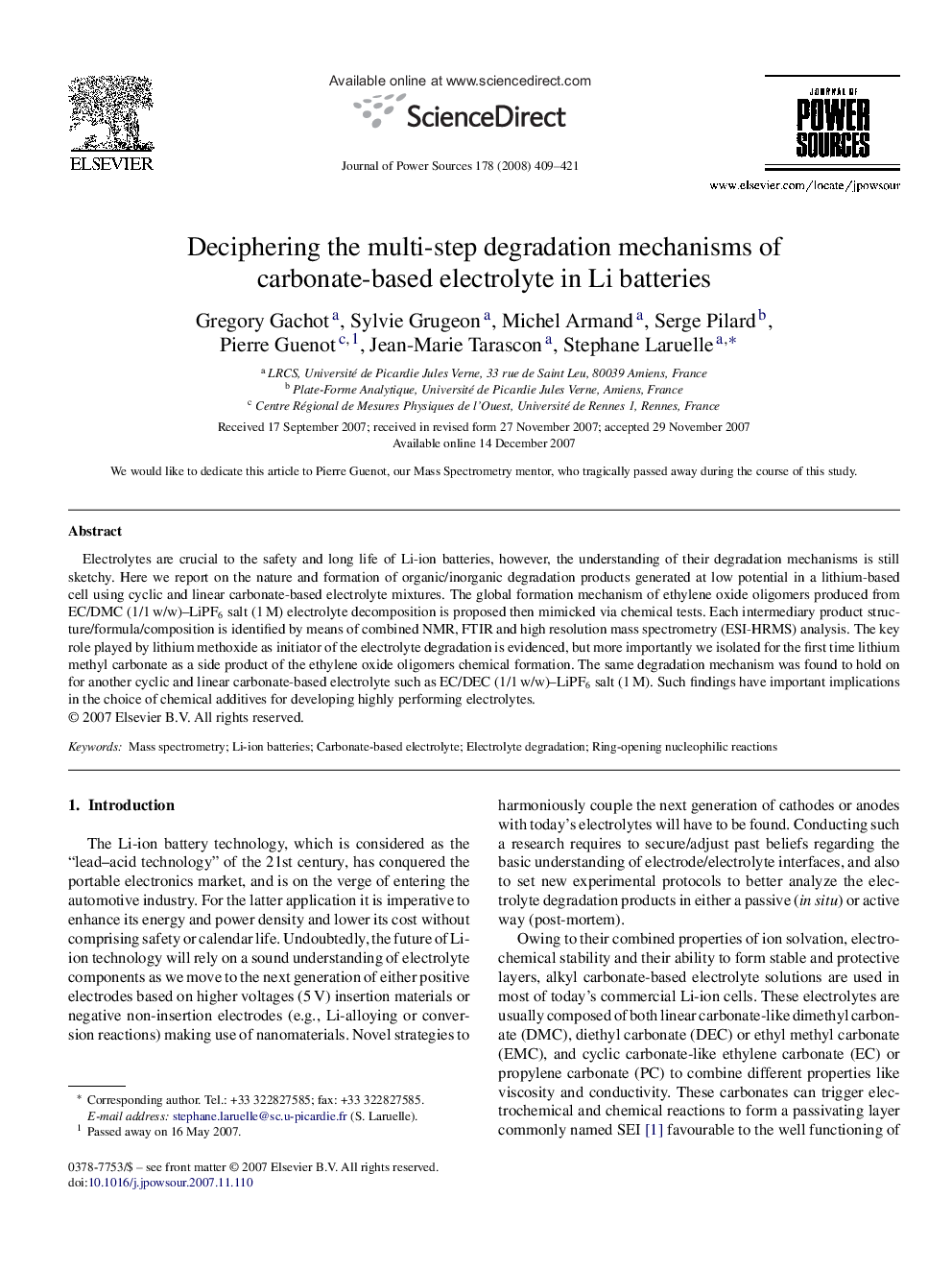| Article ID | Journal | Published Year | Pages | File Type |
|---|---|---|---|---|
| 1291537 | Journal of Power Sources | 2008 | 13 Pages |
Electrolytes are crucial to the safety and long life of Li-ion batteries, however, the understanding of their degradation mechanisms is still sketchy. Here we report on the nature and formation of organic/inorganic degradation products generated at low potential in a lithium-based cell using cyclic and linear carbonate-based electrolyte mixtures. The global formation mechanism of ethylene oxide oligomers produced from EC/DMC (1/1 w/w)–LiPF6 salt (1 M) electrolyte decomposition is proposed then mimicked via chemical tests. Each intermediary product structure/formula/composition is identified by means of combined NMR, FTIR and high resolution mass spectrometry (ESI-HRMS) analysis. The key role played by lithium methoxide as initiator of the electrolyte degradation is evidenced, but more importantly we isolated for the first time lithium methyl carbonate as a side product of the ethylene oxide oligomers chemical formation. The same degradation mechanism was found to hold on for another cyclic and linear carbonate-based electrolyte such as EC/DEC (1/1 w/w)–LiPF6 salt (1 M). Such findings have important implications in the choice of chemical additives for developing highly performing electrolytes.
